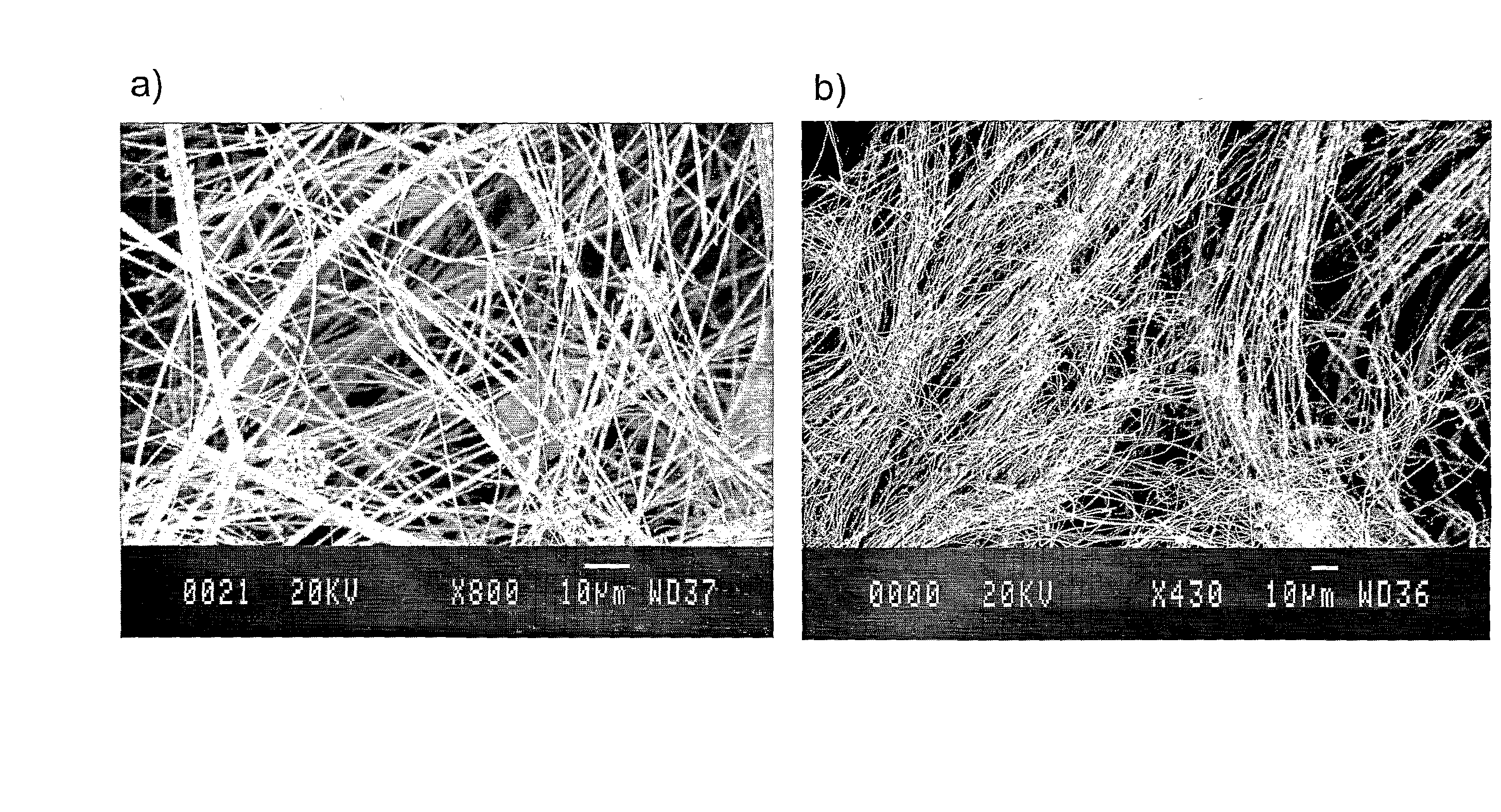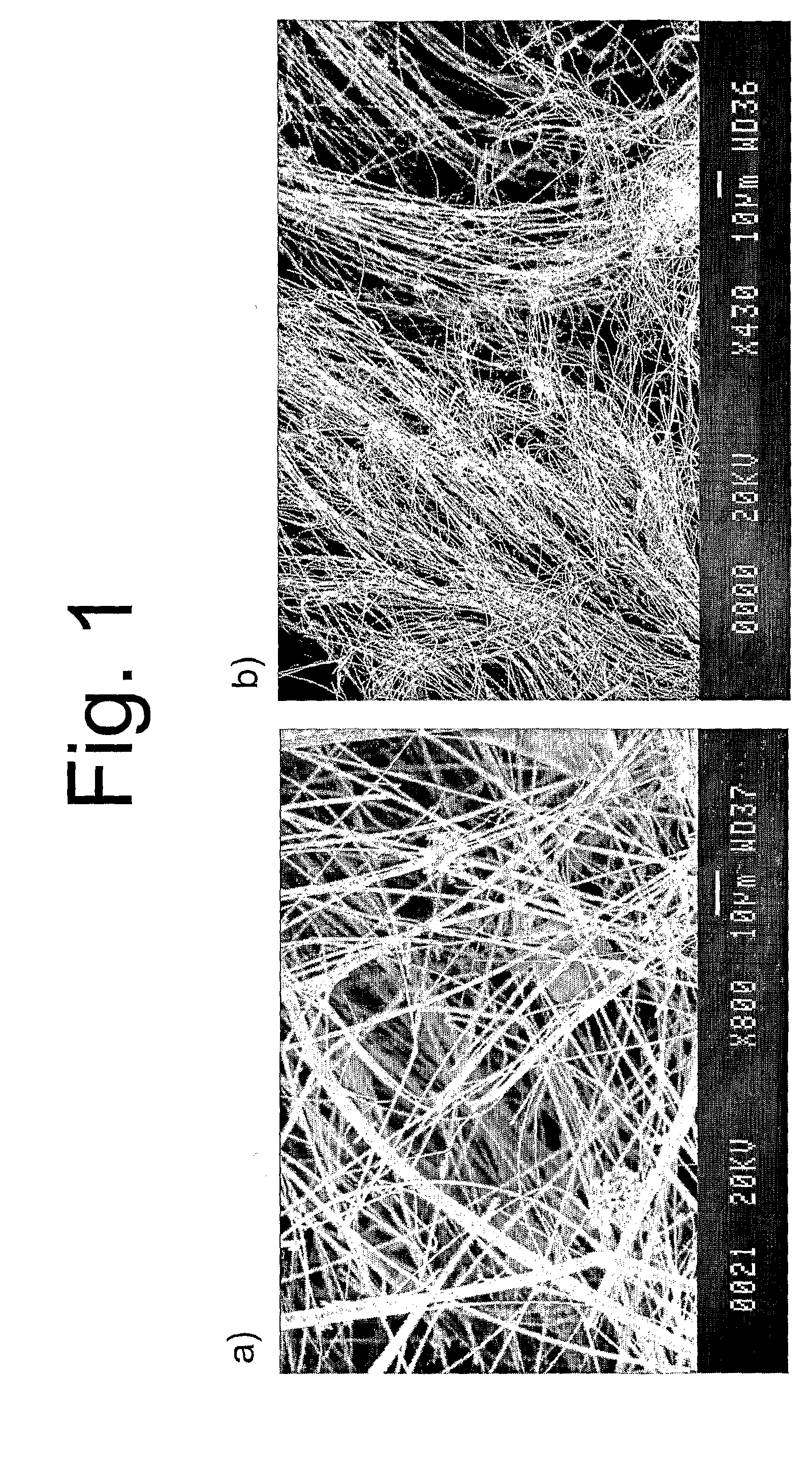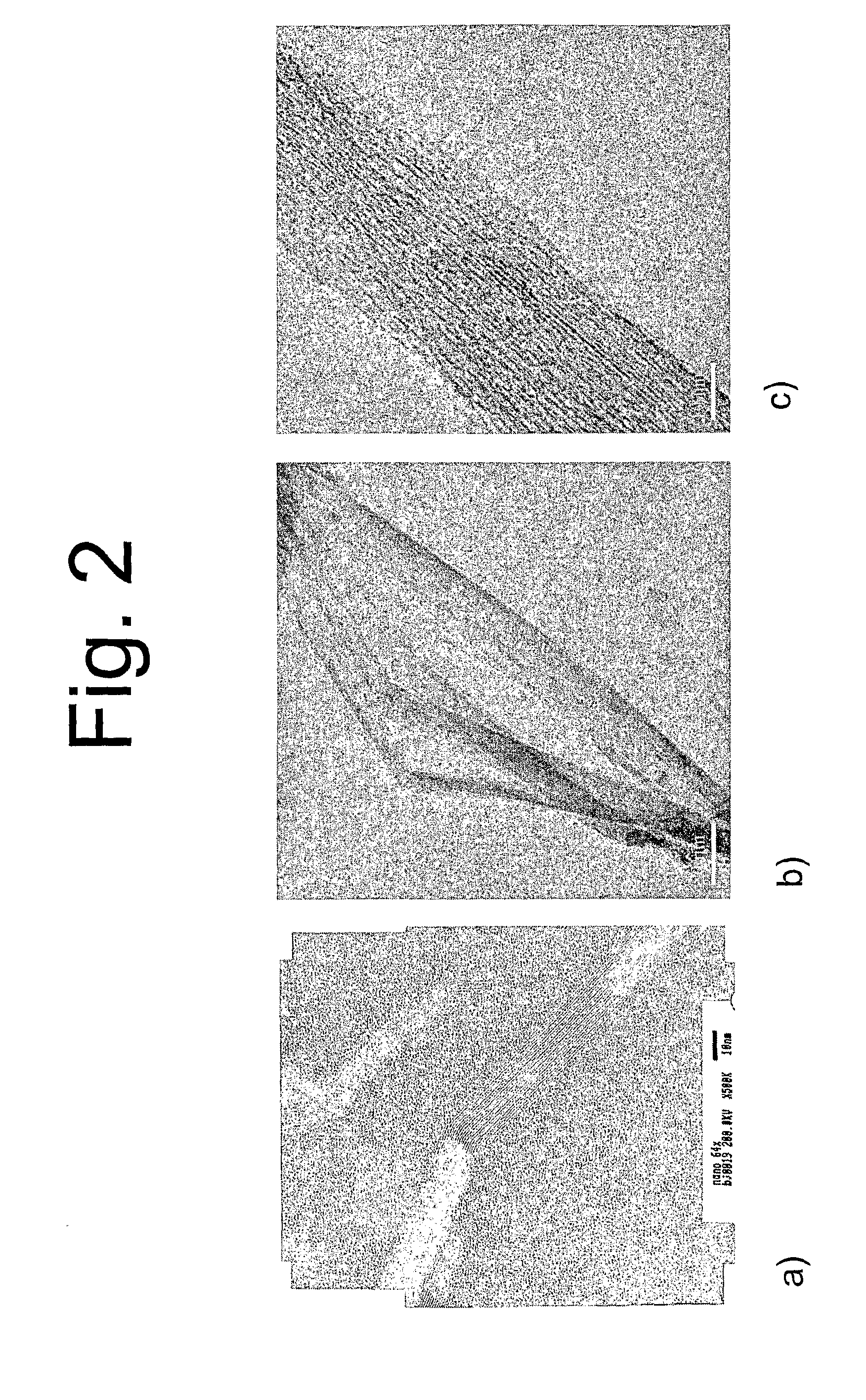Quasi-One-Dimensional Polymers Based on the Metal-Chalcogen-Halogen System
a one-dimensional polymer and metalchalcogen technology, applied in the manufacture of halogen oxide/oxyacids, electric discharge tubes/lamps, physical/chemical process catalysts, etc., can solve the problems of separation of materials, unsuitable synthesis methods presently used, such as arc discharge or laser ablation, and difficult separation of materials, etc., to enhance the bond to the host material, excellent tribological properties, and enhance the effect of electrical
- Summary
- Abstract
- Description
- Claims
- Application Information
AI Technical Summary
Benefits of technology
Problems solved by technology
Method used
Image
Examples
example 2
Synthesis
[0088] The synthesis is performed in sealed and evacuated quartz ampoule (diameter 19 mm, length 140 mm), containing platelets of Mo sheet metal (Aldrich, molybdenum foil 0.1 mm thick, 99.9+%), S (Aldrich, sulfur powder, 99.98%) and I2 (Aldrich, 99.999+%) in the amounts 6:4:4 (Mo: 0.8981 g, S: 0.2000 g, I2: 0.7919 g). The ampoule is placed in a single-zone furnace (LINDBERG STF 55346C) and heated from room temperature to a temperature of 1150° C. at a rate 8 K per hour. This temperature is kept stable for 72 hours. The ampoule is then cooled at 1.5 K per minute. The resulting material contains a large amount of material in the form of furry-like material (FIG. 2), which upon closer examination contains ropes of material with stoichiometry given by Mo6S4.5I4.5.
Composition
[0089] The composition, as determined EA (elemental analysis) is given as Mo6S4.5I4.5.
found %:Mo 43.5; S 11.2; I 45.3 (measuretolerance ±0.3%)calculated for Mo6S4.5I4.5, %:Mo 44.6; S 11.2; I 44.2.
The c...
PUM
| Property | Measurement | Unit |
|---|---|---|
| temperature | aaaaa | aaaaa |
| temperatures | aaaaa | aaaaa |
| diameter | aaaaa | aaaaa |
Abstract
Description
Claims
Application Information
 Login to View More
Login to View More - R&D
- Intellectual Property
- Life Sciences
- Materials
- Tech Scout
- Unparalleled Data Quality
- Higher Quality Content
- 60% Fewer Hallucinations
Browse by: Latest US Patents, China's latest patents, Technical Efficacy Thesaurus, Application Domain, Technology Topic, Popular Technical Reports.
© 2025 PatSnap. All rights reserved.Legal|Privacy policy|Modern Slavery Act Transparency Statement|Sitemap|About US| Contact US: help@patsnap.com



